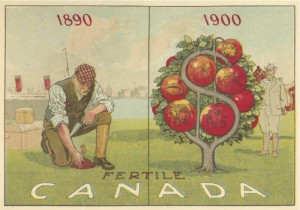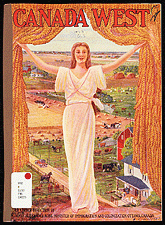2] In this lesson I say that it should be clear that the discourse on nationalism is also about ethnicity and ideologies of “race.” If you trace the historical overview of nationalism in Canada in the CanLit guide, you will find many examples of state legislation and policies that excluded and discriminated against certain peoples based on ideas about racial inferiority and capacities to assimilate. – and in turn, state legislation and policies that worked to try to rectify early policies of exclusion and racial discrimination. As the guide points out, the nation is an imagined community, whereas the state is a “governed group of people.” For this blog assignment, I would like you to research and summarize one of the state or governing activities, such as The Royal Proclamation 1763, the Indian Act 1876, Immigration Act 1910, or the Multiculturalism Act 1989 – you choose the legislation or policy or commission you find most interesting. Write a blog about your findings and in your conclusion comment on whether or not your findings support Coleman’s argument about the project of white civility.
In my reading of the Indian Act 1876, I was able to find many discriminatory notions of what an “indian” was within the Canadian law. What interests me is the strong constraints at the very beginning of the document. The state is very clear as to the whom the act applies to. For this blog I would like to raise awareness to the “terms” section at the very beginning of the Indian Act.
This specific quote raised many flags of discrimination and race superiority through my point of view. It is stated under the title “Indians”.
First. Any male person of Indian blood reputed to belong to a particular band; Secondly. Any child of such person;
Thirdly. Any woman who is or was lawfully married to such person
In this section the act begins to eliminates the number of First Nations people affected by this law within the third sentence. A lawful marriage to the state would be a Christian or catholic marriage within the church of Christ. Therefor it is implied that any woman who did not have a marriage certificate with a First Nations man was not an Indian and would not be included in the Indian Act. Here we see superiority due to the implication that an official marriage is required and that a First Nations woman would not be considered First Nations if she were not accompanied by a man. My observation is also addressed once again under the title “Marrying non-treaty Indians”.
(d) Provided that any Indian woman marrying an Indian of any other band, or a non-treaty Indian shall cease to be a member of the band to which she formerly belonged. and become a member of the band or irregular band of which her husband is a member:
This presents more constraints in regards to Firs Nations women.
Under the sub title “Half Breeds” the document is once again limiting the amout of people who are covered under the Indian Act.
(e) Provided also that no half-breed in Manitoba who has shared in the distribution of half-breed lands shall be accounted an Indian; and that no half-breed of a family (except the widow of an Indian, or a half-breed who has already been admitted into a treaty), shall, unless under very special circumstances, to be determined by the Superintendent-General or his agent, be accounted an Indian, or entitled to be admitted into any Indian treaty.
The state is taking control over whom is able to claim themselves as being part of an “Indian Band”. This section becomes relevant to the Metis people of Canada and the ownership of their heritage which they continue to fight for. This stuck me because it seems as though if a person was not covered by the Indian Act, they were not considered First Nations and were immediately considered part of the immigration masses. This law once again revokes a person’s heritage and identity to assimilate them into the civil European masses.
The final law in the terms section which I thought was relevant to the term white civility is,
- The term “person” means an individual other than an Indian, unless the context clearly requires another construction.
I clear division between the Nations and the state. This support’s Coleman’s concepts of white Civility because within the terms of the document the state is beginning to separate and segregate people even before they list the rules and constraints they are placing upon First Nations people. The favorable culture within the document is the British European worldview and the document is stating that their world view is one which the First Nations people must live by.
Bibiliography
Crey, Karrmen, and Erin Hanson. ‘Indian Status’. Indigenousfoundations.arts.ubc.ca. N.p., 2015. Web. 30 July 2015.
‘Chapter 18: An Act To Amend And Consolidate The Laws Respecting Indians’. N.p., 2015. Web. 30 July 2015.
Montpetit, Isabelle. ‘Background: The Indian Act’. Cbc.ca. N.p., 2015. Web. 30 July 2015.

